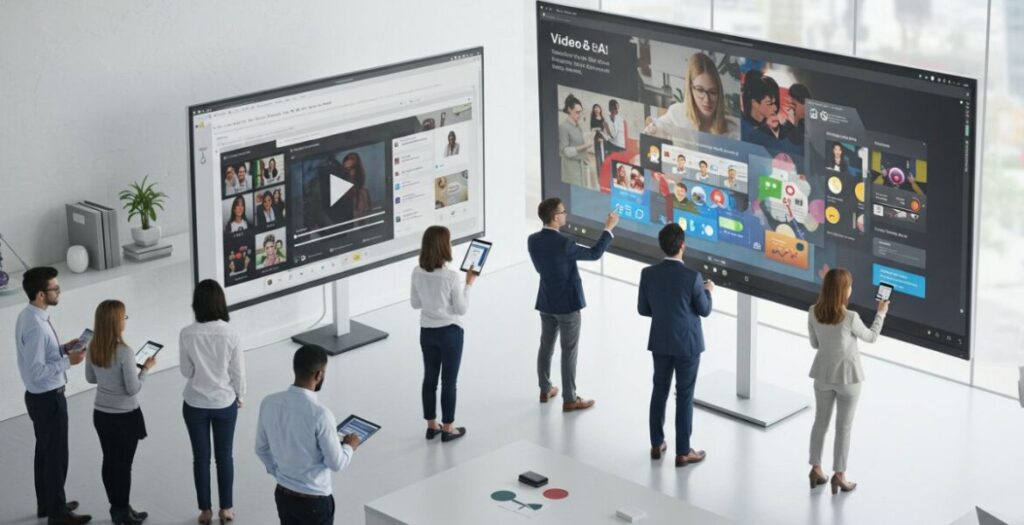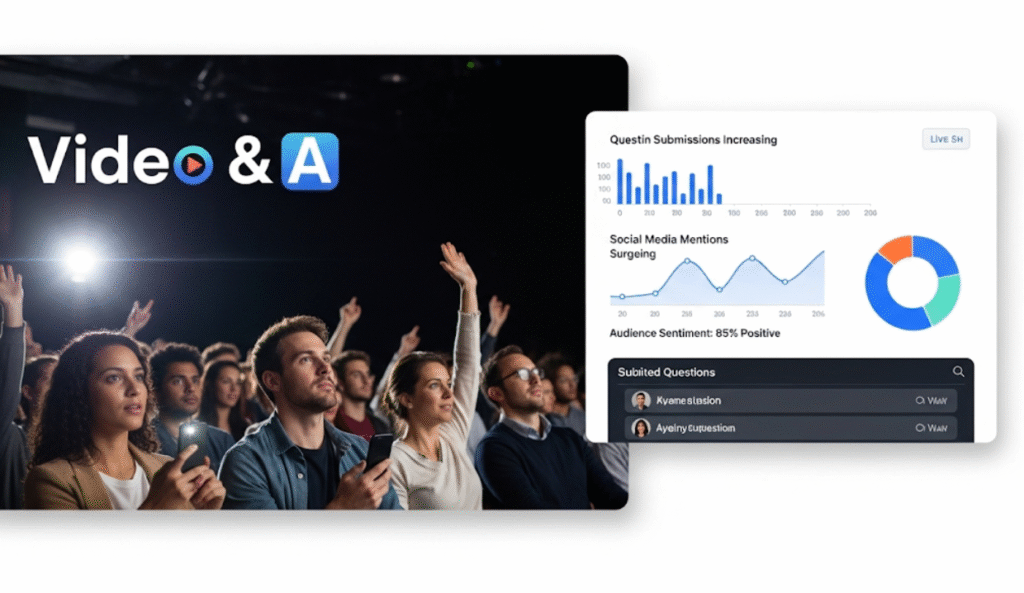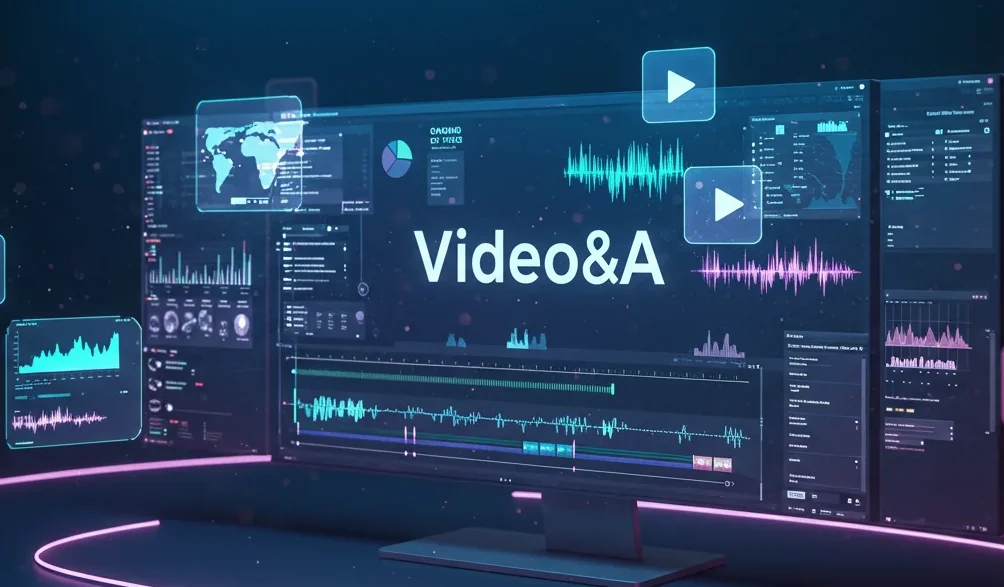The way we consume digital media is undergoing a significant shift. Simple, one-way video streams are evolving into something far more engaging and intelligent. This new frontier is called Video&A, a concept that merges high-quality video with the power of analytics, accessibility, and audience interaction. It transforms passive viewing into an active, participatory experience.
For marketers, educators, and creators, understanding it is no longer optional—it’s essential for staying relevant. This guide explores what it is, how it’s reshaping industries, and why it represents the future of digital communication. We will cover its benefits, the technology behind it, and how you can start using it to connect with your audience on a deeper level.
Table of Contents
Decoding Video&A: More Than Just a Video
So, what exactly is Video&A? The term represents the fusion of Video with an additive layer, most commonly defined as Analytics, Accessibility, and Audience Interaction. It’s a holistic approach where video content is not just created and published but is also measured, made inclusive, and designed to foster a two-way conversation.
Let’s break down its core components:
- Video: The primary medium for storytelling, demonstrations, and communication. It captures attention through visual and auditory stimulation.
- Analytics: This involves gathering and analyzing data on viewer behavior. Metrics like watch time, drop-off points, click-through rates, and engagement patterns provide invaluable insights for content optimization.
- Accessibility: This ensures that video content is usable by everyone, including people with disabilities. Features like closed captions, audio descriptions, transcripts, and language translations make content inclusive.
- Audience Interaction: This is the element that turns passive viewers into active participants. Interactive features can include polls, quizzes, clickable buttons, Q&A segments, and branching narratives.
Unlike traditional video, which is a monologue, it creates a dialogue. It builds a feedback loop where creators can understand their audience, and the audience feels heard and valued.

Why It is a Game-Changer for Engagement
Adopting a Video&A strategy offers powerful advantages that address the challenges of today’s saturated digital landscape. It captures attention, builds trust, and delivers measurable results.
Deeper Audience Connection
Interactive elements make content more memorable. When viewers can influence the content or ask questions directly, they feel a stronger connection to the brand or creator. This sense of participation builds a loyal community around your content.
Data-Driven Content Strategy
Guesswork is expensive. It provides concrete data on what works and what doesn’t. By analyzing which parts of a video viewers rewatch, skip, or interact with, you can refine your messaging and production style to better meet their needs, improving your return on investment.
Enhanced Learning and Retention
In an educational context, it is revolutionary. Interactive quizzes, embedded questions, and instant feedback loops can significantly boost knowledge retention. Students learn by doing, not just by watching, which leads to better outcomes.
Inclusive and Global Reach
By prioritizing accessibility, you open your content to a much wider audience. Captions and translations help you cross language barriers, while features for visual or hearing impairments ensure no one is left out. This inclusivity also strengthens your brand’s reputation as a responsible and thoughtful organization.
Traditional Video vs. Video&A: A Comparative Look
| Feature | Traditional Video | Video&A |
|---|---|---|
| Viewer Role | Passive consumer | Active participant |
| Communication | One-way broadcast | Two-way dialogue |
| Data & Analytics | Basic metrics (e.g., view count, likes) | Detailed behavioral insights (e.g., heatmaps, engagement rates) |
| Engagement | Low to moderate | High to very high |
| Accessibility | Often an afterthought | Integrated from the start (captions, transcripts) |
| Measurement of ROI | Difficult and often indirect | Clear, data-driven, and measurable |
Real-World Applications Across Industries
It is not just a theoretical concept; it’s already being implemented with great success in various sectors. Its flexibility allows it to be adapted for different goals and audiences.
1. Marketing and E-commerce
Marketers are using it to create compelling and convertible experiences.
- Shoppable Videos: Viewers can click on products within a video to get more information or add items directly to their cart. This shortens the path to purchase and boosts conversion rates.
- Interactive Ads: Instead of a standard ad, brands create “choose-your-own-adventure” style commercials where the viewer’s choices determine the outcome. This increases ad watch time and brand recall.
- Data-Informed Campaigns: Analytics help marketers understand which visual elements, calls-to-action, or messages resonate most, allowing for real-time optimization of ad spend.

2. Education and Corporate Training
The shift to online learning has accelerated the adoption of Video&A.
- Interactive Lectures: Professors and trainers can embed quizzes, polls, and open-ended questions directly into video lessons to check for understanding.
- Personalized Learning Paths: Based on a student’s answers, the video platform can direct them to remedial content or more advanced topics, creating a customized learning journey.
- Skill Assessment: In corporate training, interactive simulations within videos can be used to assess an employee’s grasp of new software or procedures in a practical, low-risk environment.
3. Entertainment and Media
Streaming platforms are experimenting with it to create more immersive forms of entertainment.
- Branching Narratives: Shows where the audience makes key decisions for the characters, leading to multiple possible endings.
- Live Fan Engagement: During live-streamed concerts or events, artists can use polls to let the audience vote on the next song or ask questions in a real-time Q&A.
The Technology Fuelling the Revolution
Several technological advancements have made the rise of Video&A possible. These tools are becoming more accessible, allowing even small creators to produce sophisticated interactive content.
- Artificial Intelligence (AI): AI algorithms are crucial for analyzing large sets of viewer data to identify patterns. AI also powers automated captioning, translations, and even the generation of personalized video content based on user profiles.
- Interactive Video Platforms: Specialized software and platforms (like Vimeo Interactive, HapYak, and Kaltura) provide the tools to add clickable hotspots, overlays, quizzes, and branching logic to standard videos.
- Augmented Reality (AR) and Virtual Reality (VR): These technologies take interactivity to the next level. In e-commerce, AR allows for virtual “try-ons.” In training, VR can create fully immersive simulations.
- 5G Connectivity: Faster and more reliable internet speeds are essential for streaming high-quality, interactive video content without buffering or lag, ensuring a seamless user experience.
Navigating the Challenges of Implementation
While the benefits are clear, adopting this strategy comes with its own set of challenges that organizations must consider.
- Higher Production Costs and Complexity: Creating interactive video requires more planning, specialized tools, and often more time than producing a standard linear video.
- Data Privacy Concerns: Collecting detailed viewer analytics raises important questions about data privacy and transparency. It’s crucial to be clear with users about what data is being collected and to comply with regulations like GDPR.
- The Accessibility Gap: If not planned carefully, interactive features can sometimes create new barriers for people with certain disabilities. Accessibility must be a core part of the design process, not an add-on.
The Future of Video&A: What to Expect
The evolution of it is far from over. As technology continues to advance, we can expect to see even more sophisticated and integrated applications.
Future trends include:
- Hyper-Personalization: AI will enable video content to adapt in real-time to a viewer’s emotional responses, detected through facial recognition or other biometric data.
- Seamless Metaverse Integration: It will be a foundational element of the metaverse, enabling immersive meetings, virtual storefronts, and interactive entertainment environments.
- Voice and Gesture Control: Viewers will interact with videos using natural language commands and hand gestures, moving beyond clicks and taps.
Frequently Asked Questions (FAQ)
1. Is it only for large corporations with big budgets?
Not at all. While high-end interactive productions can be expensive, many accessible tools are available. Social media platforms like Instagram and TikTok have built-in features like polls, Q&As, and stickers that allow anyone to start creating interactive video content with just a smartphone.
2. What is the most important component of it to start with?
For most creators and businesses, starting with audience interaction and analytics provides the biggest initial return. Use simple tools like polls or Q&A sessions to engage your viewers, and then study the analytics to understand what they respond to. This creates a solid foundation to build upon.
3. How do I measure the ROI of a Video&A campaign?
The ROI can be measured with specific, data-driven KPIs. Instead of just looking at views, you can track more meaningful metrics like:
* Click-through rates on in-video links.
* Completion rates for quizzes or modules.
* Conversion rates from shoppable videos.
* Audience retention rates at key message points.
4. Can I turn my existing videos into Video&A content?
Yes. Many interactive video platforms allow you to upload your existing video files and add interactive layers on top of them. You can add clickable calls-to-action, chapter markers, embedded questions, and links to external resources without needing to re-shoot the video.
5. How does Video&A impact SEO?
Video&A can positively impact SEO in several ways. The high engagement it generates sends positive signals to search engines. Additionally, providing transcripts and detailed descriptions for accessibility also makes your content more crawlable for search engine bots. Content from interactive Q&A sessions can be repurposed into blog posts or FAQ pages, targeting long-tail keywords.

Leave a Reply